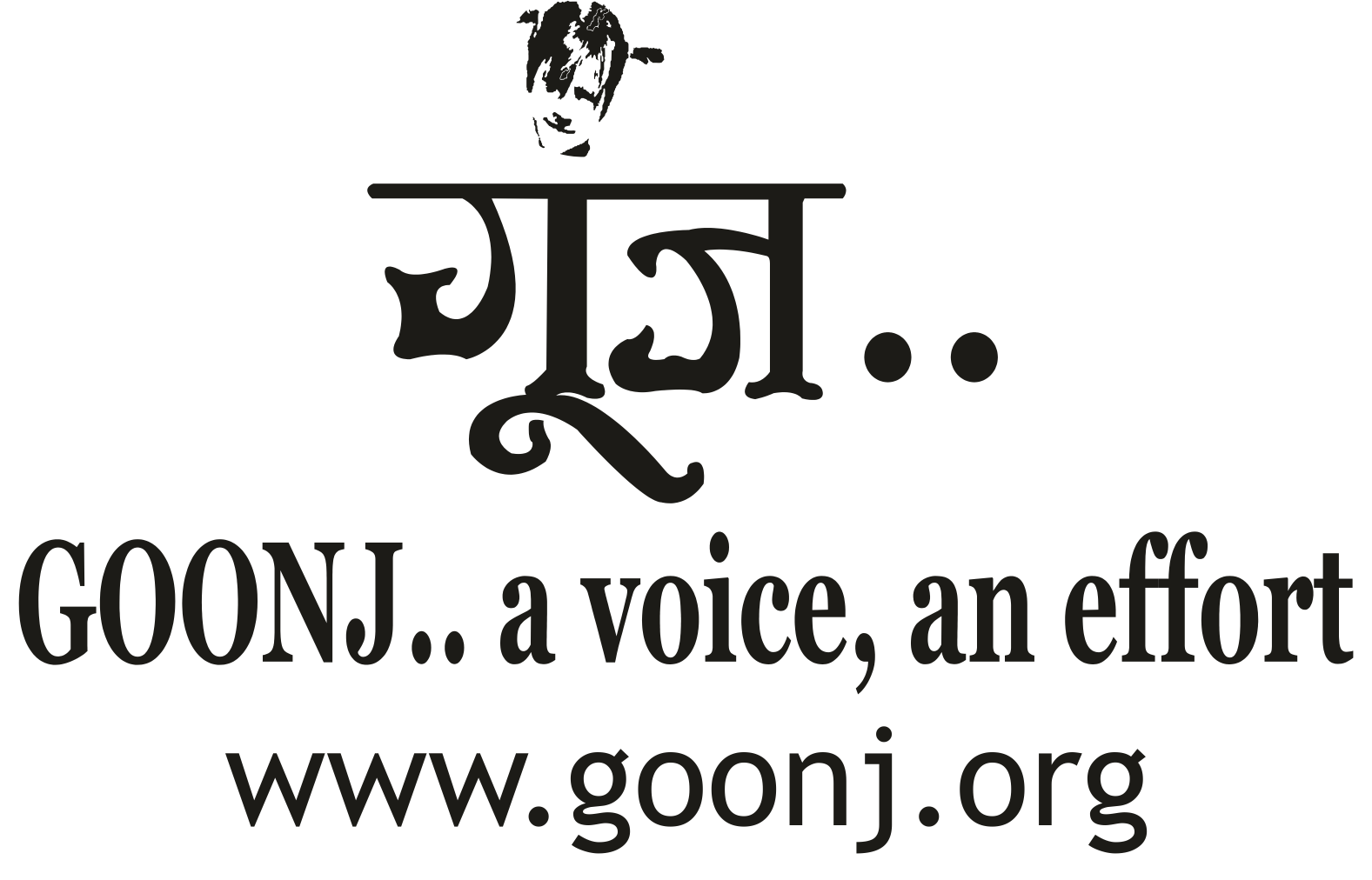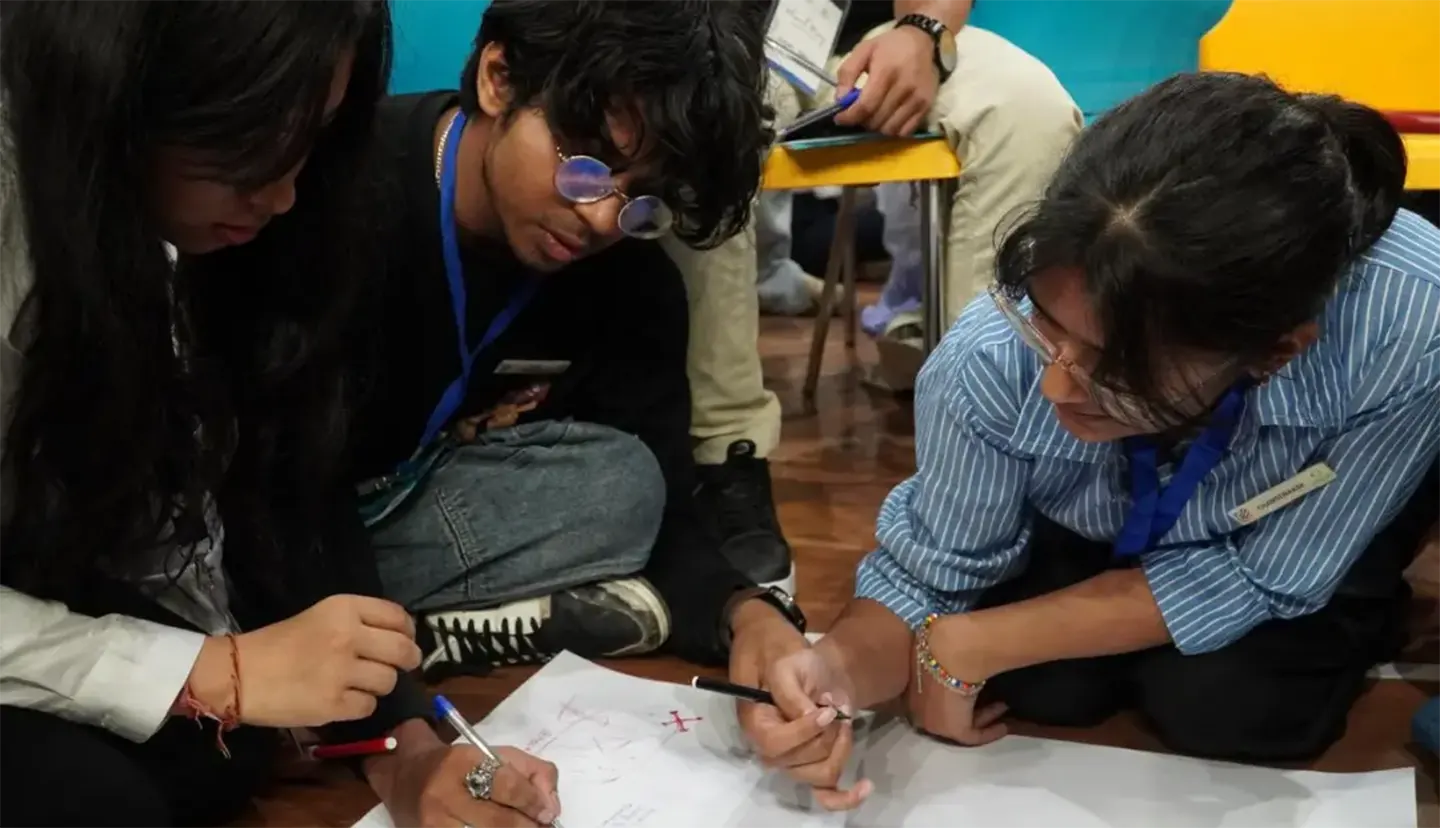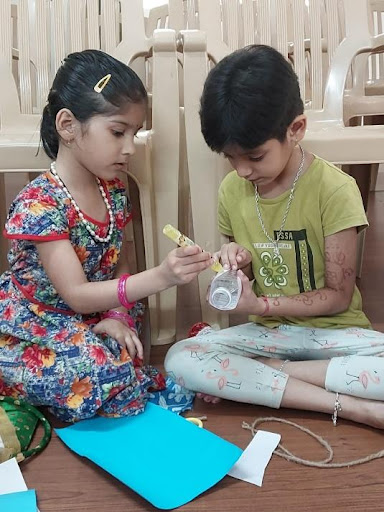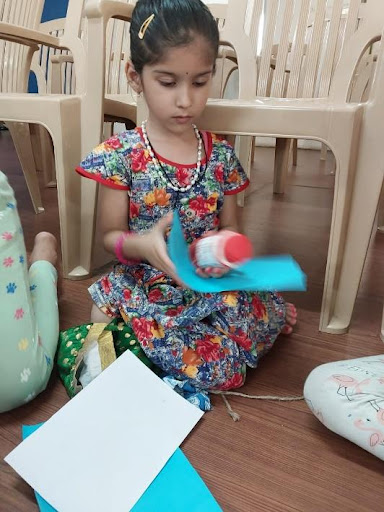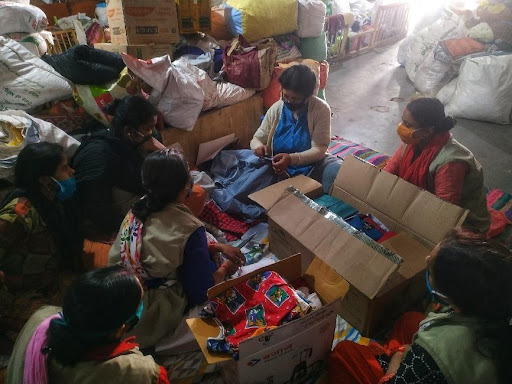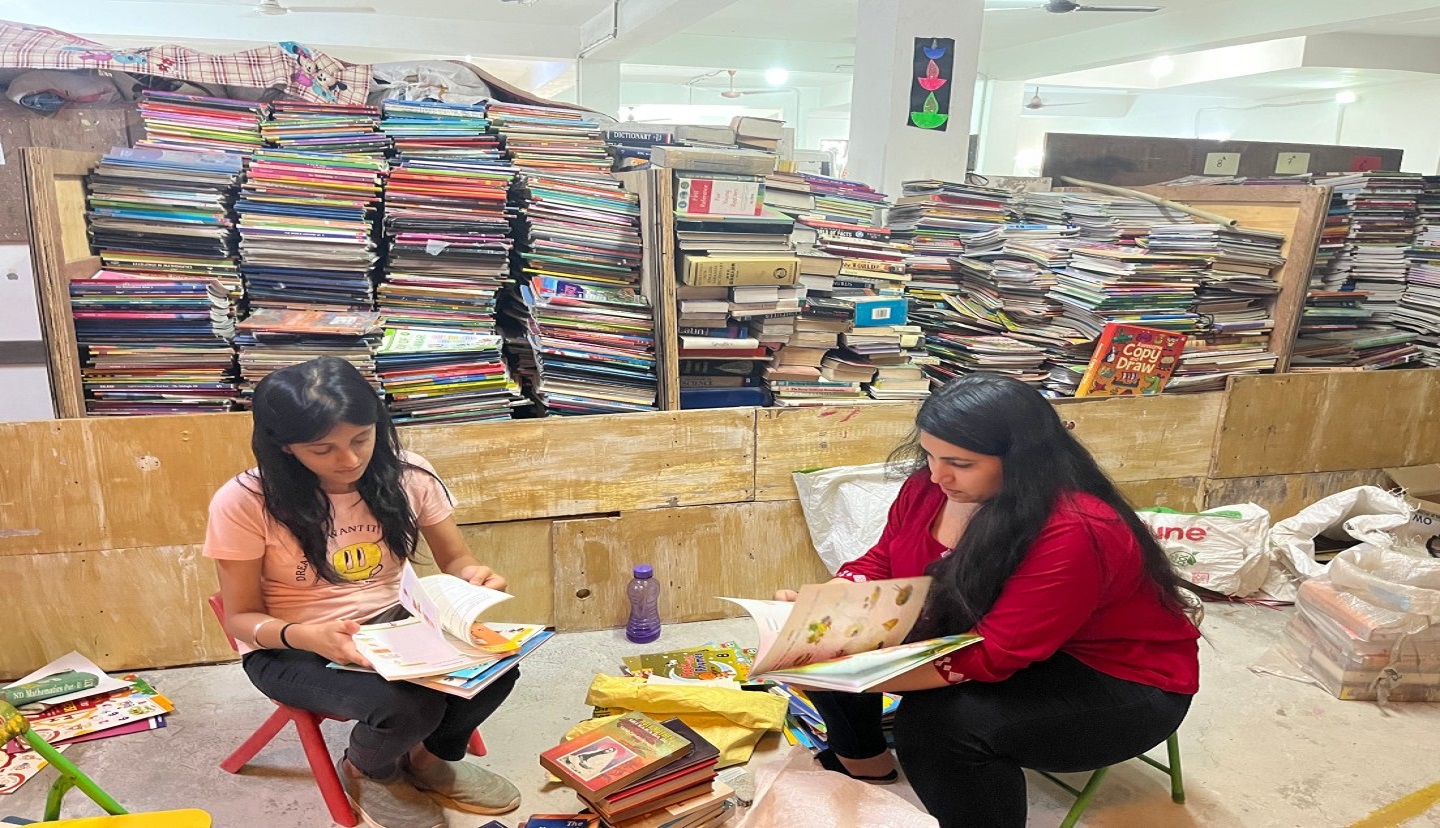When Summers Meant Mangoes…
There was a time when summers meant mangoes sliced on rooftops, skin powdered in talcum, the sweet-cooling taste of matka water, the freedom of being outdoors—running barefoot, sweating through play, and sleeping under open skies.But for millions of children today, summer has become something else entirely. It means confinement. Curtains drawn. Artificial cooling. Survival over nostalgia.
This shift is not just cultural—it’s climatic. A silent, creeping indifference that grows each time we witness another flood, another heatwave, another record broken by a decimal, bringing numbness—climate fatigue.
Global warming, once a distant warning, is now an unfolding crisis. The Himalayas’ glaciers are retreating at an alarming rate, and the growing threat of rising temperatures to the region’s mountains and glaciers is impacting critical lifelines—directly or indirectly—for nearly 2 billion people.
Redefining What Counts as a Disaster
In our collective imagination, a disaster often means a single, catastrophic event—an earthquake, a cyclone, a flood that takes hundreds of lives. But this definition fails us.
Heatwaves are not just hot days for India. For the second consecutive year, the IMD (India Meteorological Department) has predicted an above-normal number of heatwave days across most parts of the country. 2024 has already made climate history. It became the first calendar year to cross 1.5°C above pre-industrial levels. Every month from January to June 2024 was the warmest ever recorded for that month.
But this isn’t just data—it’s a lived experience. Streets soften under the sun, crops wither before harvest, human fatalities rise—especially among vulnerable populations like women, pregnant women, the elderly, and outdoor workers.
Myth: Major response is only needed when there are many deaths.
Reality: Even without mass casualties, the destruction of land, property, and livelihoods shatters lives.
Disaster isn’t just measured in death tolls. It’s displacement, disease, hunger, trauma, lost income, and deepened inequality. According to the World Meteorological Organization (WMO), heatwaves claimed 25,692 lives in India between 1992 and 2020—a span of 28 years. Notably, over one-third of these deaths occurred in just a decade, between 2011 and 2021.
But beyond fatalities, they push communities into financial vulnerability, and leave lasting mental and physical turmoil. These are invisible disasters—quiet, compounding, and often ignored. But their impact is as urgent, as devastating, and as deserving of response as any sudden calamity.
The Elephant in the room—we need to talk about it
“Climate emergency”—it’s everywhere now. But its omnipresence may be seeding ignorance instead of urgency. What happens when a flood becomes just another seasonal event?
During one of the yatras in Bihar, Anshu Gupta (Founder, Goonj and Gram Swabhimaan) shared:
“As I walked through the flood-prone regions, I met families who shift their homes every year, who move their homes to the roadside every monsoon—because their land floods for months—who still celebrate life in the months in between—festivals, rituals, marriages—who have internalized resilience to a point where I sometimes wonder—is too much resilience also a curse?”
Traditional disaster response largely focuses on sending relief post-disaster, but for many communities, the crisis existed long before the event occurred.
Without steady access to safe housing, clean water, local healthcare, and sustainable livelihoods, these communities are not waiting for disasters to happen—they are living with ongoing challenges every day.
The most climate-resilient communities are those with access to local resources, diverse income streams, and strong community networks—well before any disaster—exposing the “climate vulnerability gap.”
This Is Not Normal. And It Shouldn’t Be.
It is time to look. To listen. And to act—not only in the wake of calamity, but in its long, quiet lead-up.
While immediate relief is necessary, a long-term shift is needed—from reactive aid to proactive, community-led climate resilience. There is a need to bring in an understanding that resilience must be rooted in societal ownership—in people-led efforts that start with preparedness and carry through recovery. Cities and villages, institutions and communities all participate, contributing what they can through cross-sectoral resource commitments. This model thrives on shared learning—drawing from lived experiences, local innovations, and day-to-day resilience. Because resilience isn’t a one-time goal—it’s something we keep building together, through collective effort and continuous participation.
Long seen as a flood-prone state, Assam is now facing a quieter, unfamiliar threat—drought. In districts like Dhemaji, erratic monsoons and prolonged dry spells are already affecting crops and livelihoods. But with most systems still geared toward flood response, drought preparedness remains limited. The shift in climate patterns is exposing gaps in how both communities and institutions anticipate and respond to disasters—especially when the nature of these disasters is rapidly evolving.
But not everyone is waiting for change—some are building it. Over the past 26 years, Goonj has been channeling material surplus for the holistic development of marginalized communities without negating their self-worth and dignity. It focuses on empowering communities in far-flung villages to solve their own problems through local knowledge and collective action. Under our Cloth for Work initiative, we encourage communities to be decision-makers about their problems and solutions.
Pomaguri’s Greenhouse: A Community Builds Its Own Climate Solution:
In Pomaguri, a small village in Dhemaji, the community came together to build a greenhouse—a space to grow saplings year-round, protect their green cover, and nurture environmental responsibility in children. Through Goonj’s Cloth for Work (CFW) initiative, women led the effort, contributing time, effort, and local wisdom. Using bamboo, mesh, jute rope, and locally sourced saplings, they built the greenhouse from the ground up.
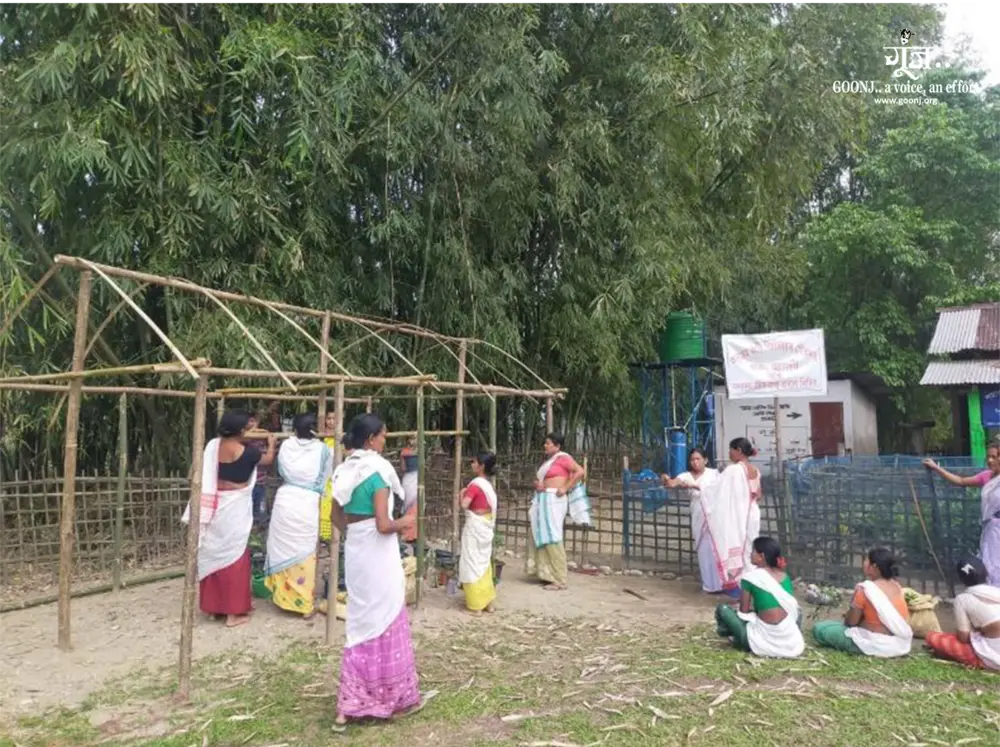
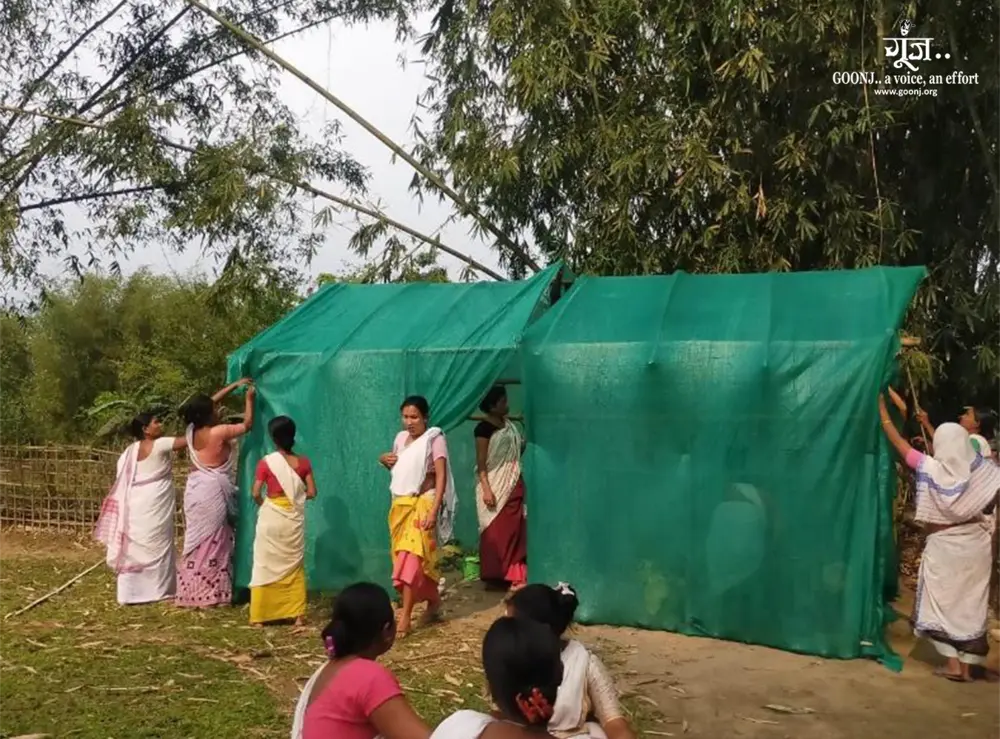
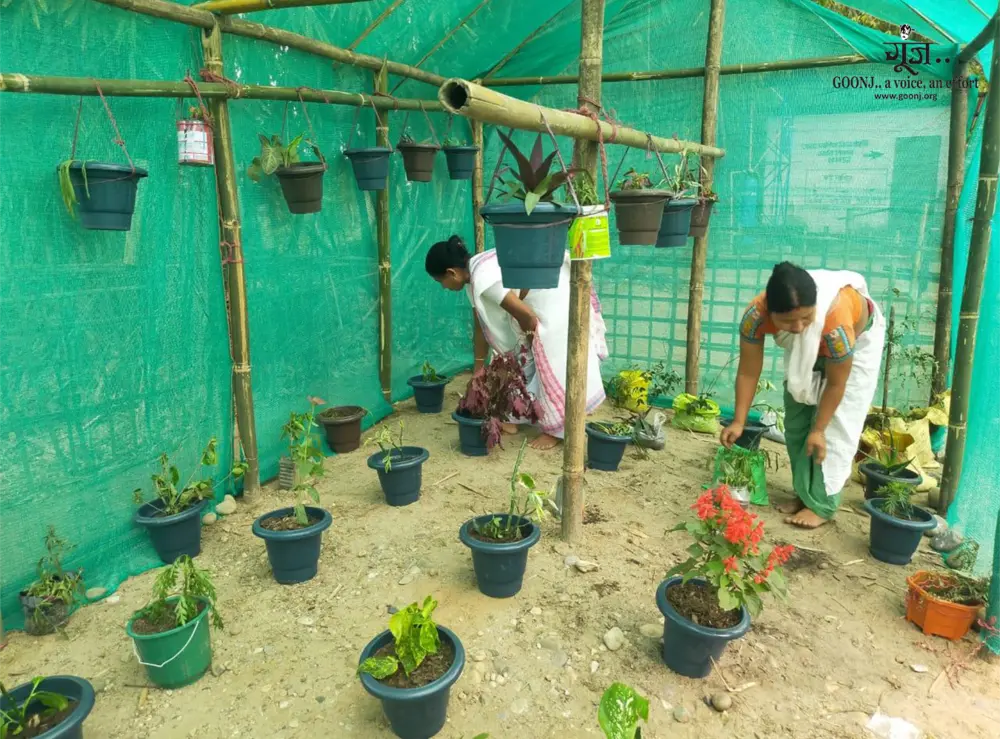
Coming up next:
If we truly begin to rethink disasters—not just as sudden events but as outcomes of long-standing neglect and indifference—then preparedness must start long before the crisis hits. In the next part of this series, we explore how a simple yet powerful shift in action and mindset—starting with water—can redefine how communities build resilience. From digging pits to reviving old ponds, we look at what it means to act before the emergency, and why every hour in the pre-monsoon window could change the course of both droughts and floods.
Start Small. Start Somewhere.
At Goonj, you’ll find many ways to begin your journey toward dignified and sustainable development—by taking responsibility for how we perceive and contribute to change.
Whether it’s starting a Goonj kee Gullak, joining Team 5000, organizing a collection drive, or volunteering—every action counts.
If you’re new here and unsure where to start—come visit us. Drop by your nearest Goonj office, and we’ll take you on a tour of our Goonj Center of Circularity, where you’ll get a peek into the Goonj Way.
We’re also building SARRD—the Societal Alliance for Resilience and Response to Disasters (formerly GARRD)—a collective, proactive response to climate emergencies, before disasters strike.
Together, we are:
- Building cross-sector alliances of citizens, schools, colleges, corporates, and social innovators
- Connecting vulnerable communities with local changemakers
- Creating an adaptive learning ecosystem
- Fostering a culture of year-round climate dialogue and public commitment
Many Ways Forward. One Clear Choice. Take Action.
References-
- Copernicus Climate Change Service. 2024. “Copernicus: 2024 Is the First Year to Exceed 1.5°C Above Pre-Industrial Level.” Copernicus Climate, April 8, 2024.
- Policy Circle. 2024. “IMD Warns of Prolonged Heatwaves across India.” The Policy Circle, April 5, 2024
- Ellis-Petersen, Hannah. 2018. “India’s Deadly Heatwaves Are a Public Health Crisis.” The Guardian, June 2, 2018.
- Intergovernmental Panel on Climate Change (IPCC). 2021. “Climate Change 2021: The Physical Science Basis – Press Release.” IPCC, August 9, 2021.
- PreventionWeb. 2023. “IPCC: Severe Consequences of Further Warming for the Disaster-Hit Himalayas.” PreventionWeb, March 2023.
- Factly. 2022. “What Is the Number of Heatwave Related Deaths in India? Different Government Organizations Provide Different Answers.” Factly, July 22, 2022.
